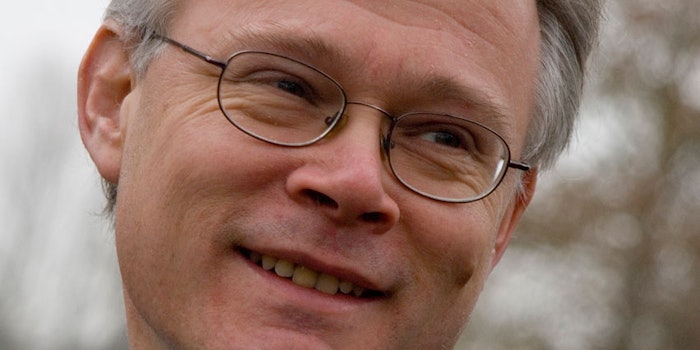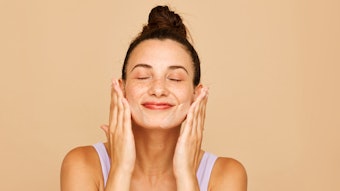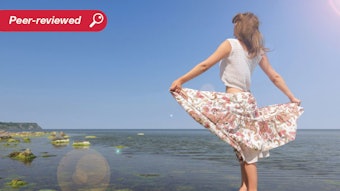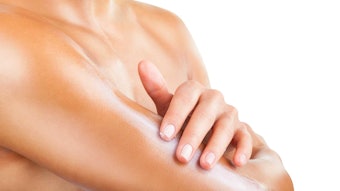
Editor's note: "Words from Wiechers" is a series considering the lessons we, as an industry, can learn from the late Johann Wiechers, Ph.D. He was an advisor, colleague, leader and "disruptive force" (in a positive way) in cosmetic science. Presenting his insights is IFSCC education chair, Anthony J. O'Lenick, Jr.
Log in to view the full article
Editor's note: "Words from Wiechers" is a series considering the lessons we, as an industry, can learn from the late Johann Wiechers, Ph.D. He was an advisor, colleague, leader and "disruptive force" (in a positive way) in cosmetic science. Presenting his insights is IFSCC education chair, Anthony J. O'Lenick, Jr.
This is the fifth in a series of articles discussing concepts presented by the late Johann Wiechers, Ph.D. It is my desire to inspire members of our industry with these words of wisdom from an icon. The present discussion, related to chapter 46 of his book, Memories of a Cosmetically Disturbed Mind, relates to an apparently inherent difference between the pharmaceutical world in which Wiechers was trained and the cosmetic world, to which he so heavily contributed.
Making Claims
A consummate and well-trained Ph.D. pharmacist, Wiechers was interested in the claims made for cosmetic products and the substantiation of those claims. He always insisted the cosmetics arena should take claims substantiation to the same degree as taken by the drug world.
He was fast to point out that some claims are simply related to advertising and strictly emotive. There are also ingredient claims, which rely on the assumption that an ingredient's presence in a formula translates its activity to the whole of the product formula. Further, product claims are made stating that the formula, in its entirety, delivers an effect or helps to deliver an effect that is not isolated to a specific raw material.
Despite which type of claim, Wiechers advocated for full, data-driven claims substantiation. This requires insight about how we test for claims as well as agreement for how we test and confirm these claims—ensuring we have a have a high degree of meaning when claims are made and that claims can be proven when subjected to scrutiny.
Mind Over Matter
Johann often said: What do you do if there are no active ingredients in your formulation? Is everything active?
This concept requires closer consideration. For instance, the use of cosmetic products could, in fact, provide benefits that are not only a function of the actives contained in the product, but also an effect due to product application and/or anticipated benefits expected by the consumer.
The effect of the mind on the body is well-documented. Touch is known to either increase or decrease oxytocin levels in individuals, depending upon the attitude of the person being touched toward the person doing the touching. Hugging induces oxytocin, the “bonding hormone,” which is renowned for reducing stress, lowering cortisol levels and increasing a sense of trust and security. As an example, according to research from the University of North Carolina, women who receive more hugs from their partners have lower heart rates and blood pressure, and higher levels of oxytocin.1
Approaches to providing such cosmetic benefits and claims to prove these benefits are still being debated; nonetheless, they are significant. This makes testing and its conditions, including the placebo choice, crucial.
Placebo Power
Regarding placebos, Wiechers noted: "The modern meaning of the word placebo has, however, also been surrounded by lamentations. In 1939, the Italian physician Fieschi introduced a technique for patients with angina pectoris in which he blocked two internal mammary arteries so that more oxygen would become available to the heart. Dramatic improvements were seen: three-quarters of patients showed an improvement and one-quarter was cured. Due to this success, this technique became the standard surgery practice for the next 20 years.
"In 1956, the American surgeon Leonard Cobb had doubts about the technique and decided to check the validity of this intervention by performing two types of surgery. In a group of nine patients, he made the incisions but did nothing more than that whereas in a second group of eight patients, he performed the full Fieschi technique. Again, results were dramatic. Similar improvements were seen in both groups—and that was the end of the Fieschi technique and the beginning of the documented surgical placebo effect.
"Ever since these days, every decently performed clinical study must be placebo-controlled. In addition, it must be performed double-blind. Both the investigator as well as the subject should not know which treatment is received to eliminate any form of bias, so we can be completely sure about the true biological effect of a treatment, and do not confuse our data by allowing a suggestive component to play a role.
"This is indeed important; after all, Henry K. Beecher, in his 1955 paper, 'The Powerful Placebo,' attributed roughly 30% of overall therapeutic benefits to the placebo effect. That paper, published in the Journal of the American Medical Association, described medicinal research—and we’re working in cosmetics where suggestion is definitely and deliberately a part of the equation!"
"Some people do not understand. . . [The belief] that every product should be tested against a placebo, irrespective of the circumstances, is understandable but wrong."
Cosmetic vs. Placebo
In cosmetic research, selecting a formulation to act as a control is problematic. As Wiechers observed, "If you claim your product is better at providing X than the leading product on the market, then you need to test it against that product and measure the development of X in both cases.
"If you claim that your active ingredient is causing X, as is often the case with suppliers, you should test it against the placebo, so that the only difference between the active formulation and placebo formulation is, indeed, the active ingredient.
"But, if you claim that your complete formulation is causing X, then X should be tested with and without use of the product for which the claim is made. In other words, it should be tested against nothing, or if you want to make things more difficult for yourself, against the current usual routine of the volunteers (without defining or describing it).
"This is exactly what some people do not understand. They claim that every product should be tested against a placebo, i.e, the same formulation without the active ingredient, irrespective of the circumstances, [which is found by reading the claims. This is] understandable but wrong."
Is Everything Active?
Wiechers continued, "As critics continue to press for the need for me to test my product against a placebo, another interesting issue is raised. What do you do if there is no active ingredient in your formulation? [Does everything become] active? (Because, after all, the formulation does have an effect).
"Is isopropyl myristate or mineral oil an active if it helps to moisturize the skin but that activity is not claimed? What do we do if an active is incorporated in an emollient that helps to moisturize the skin and, in doing so, increases the skin penetration of this active? Has the emollient now become an active?
"One thing is clear, such a base without actives is not without efficacy; but what is the placebo? That base will definitely have a measurable placebo effect. But how you design your test depends on your claim and not the other way around.
Wiechers therefore responded to would-be critics with: "No, highly-esteemed reviewers, this is wrong, as I was not claiming that my active was causing the effect (I had already done that in previous clinical trials) but that the clinical efficacy of an active is determined by the remainder of the formulation.
"Yet, when pointing out to the reviewer that (s)he had probably misunderstood the objective of my studies, the [imagined] answer was authoritative: 'In proper research, everything is tested against a placebo.'"
Wiechers then argued one could not test it against a placebo because every formulation was different. "Testing against a placebo is completely correct if you want to show that a drug or an active is responsible for the effect. But if you are testing whether or not a complete formulation that you are selling is effective (unless you are a supplier selling an active ingredient), you should be testing against untreated skin. Against nothing."
The Lesson
Mark Chandler, a longtime colleague and friend of Wiechers from his days at ICI/Uniqema/Croda—who is also carrying on Wiechers's legacy of "Formulating for Efficacy" (see software website)—points out:
"Viewed another way, from the perspective of regulators [and retired formulating expert Ken Klein], nothing in a cosmetic product is an active ingredient. So as [Wiechers] also describes, there are two levels of studies [to conduct] for cosmetic actives. The first, to be done by ingredient suppliers, is to show intrinsic and then model (drug) effects; followed sometimes by a clinical trial, which can be a very simple emulsion or solution base that has already proven not to provide the desired effect.
"The consumer-ready formulation for testing should be optimized, ... going head-to-head with a competitive formulation to see whether the total package makes people feel and look better."










